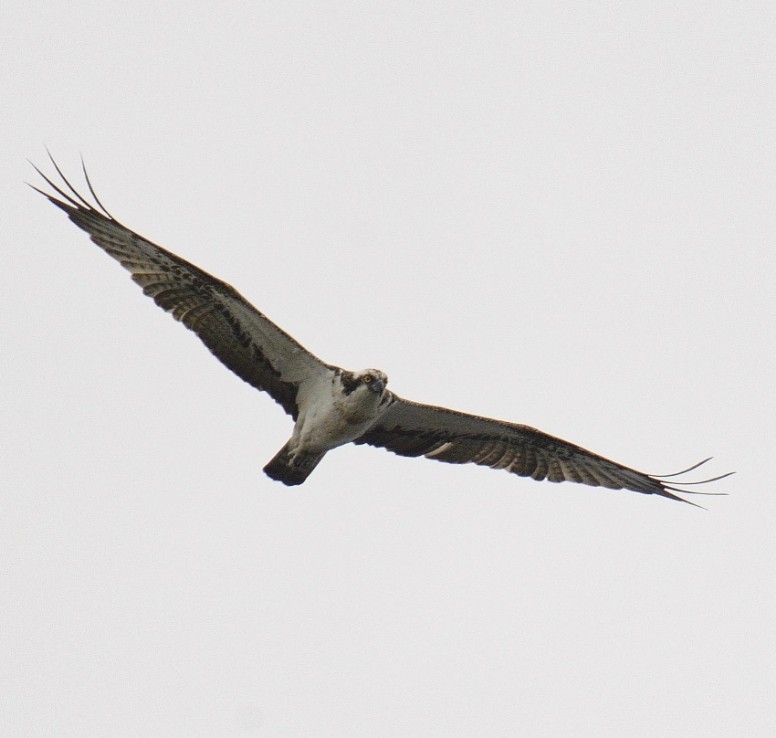Osprey
Reports
Through images on TV, the Osprey is a familiar bird plunging into water and rising with a fish in its talons. It is a fish-eating bird of prey with a cosmopolitan range. In the tropics and sub-tropics it is resident. The European population migrates to Africa after breeding.
The Osprey formerly inhabited much of Britain but heavy persecution, mainly by Victorian egg and skin collectors, during the 19th century and early 20th century, brought about its demise. After the Osprey's demise from Scotland in 1916, its successful recolonisation of Scotland from Scandinavian birds started in Loch Garten in 1954. Extensive measures to prevent further persecution by egg collectors was necessary to achieve this. A pair has nested successfully almost every year since 1959 at what is now known as the Osprey Centre at Loch Garten. By 1976 there were thought to be fourteen pairs nesting in Scotland. Fifteen years later, in 1991, there were 71 pairs. In 2001, 158 breeding pairs were located. It is now well established.
What about Osprey on Arran? At the moment it is an occasional passage migrant and the autumn is a good time to look out for them round the coast of Arran. From the Arran Bird Reports, in the 1980s there were two records, in the 1990s ten records, in the 2000s twelve and to date in the 2010s, eighteen including one that lingered for five days in November 2014. With these increasing records, the encouragement of Forestry and Land Scotland who put up breeding platforms on the island in 2010 and the continued success of the breeding pair on the near-by Isle of Bute since 2011, Osprey may establish in the future as a breeding species on Arran.
